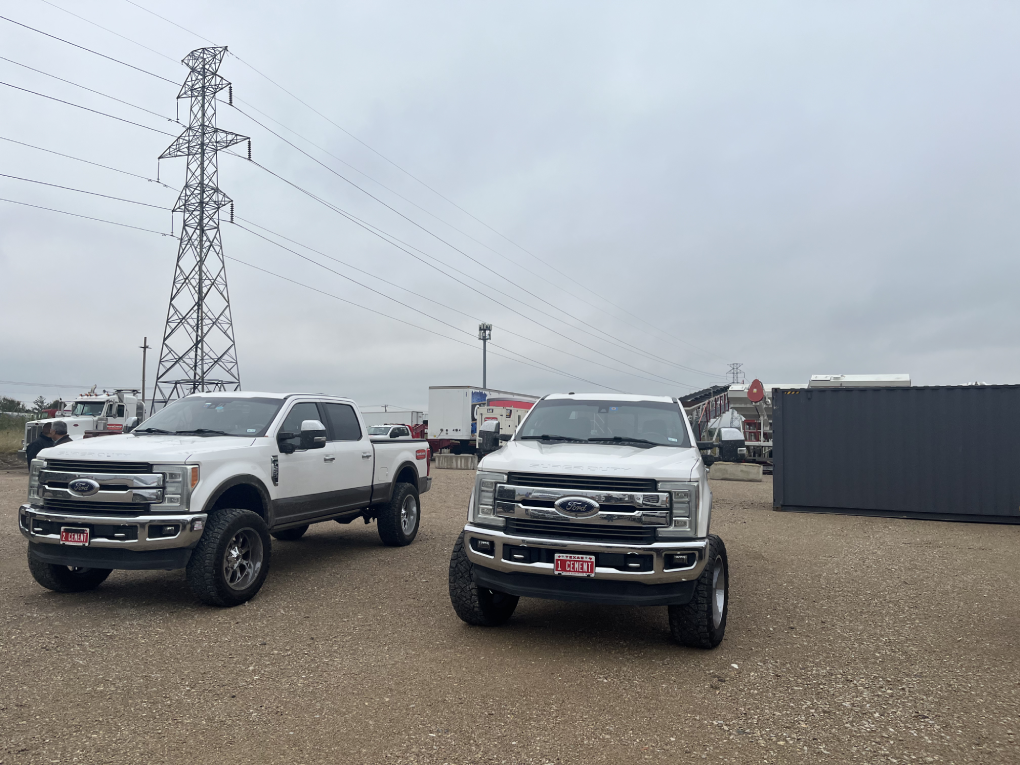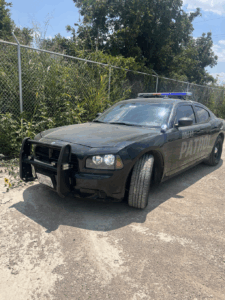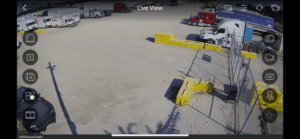Ever had to park a big vehicle? It’s not easy, right? Well, parking an M-35 truck, a massive military vehicle, is a whole different ball game! In this post, we’re going to show you how to handle such a big truck. Whether you’re new to driving big trucks or you’ve been doing it for a while but find parking tricky, we’ve got some cool tips to make it simpler. From using your mirrors properly to cool tricks like the three-point turn, we’ll help you park that giant on wheels like a pro. Ready to learn? Let’s dive in!
Why is Parking an M-35 Truck Challenging?
Parking a big truck like the M-35 isn’t just about finding a big enough space. These trucks are huge, long, and very different from your regular car or bike, which means parking them takes extra skill. So, why is it so tough? First off, the M-35 truck is long. Imagine trying to fit a giant cricket bat in a small cupboard, that’s what parking one of these feels like. Because of their size, you can’t see the back end from the driver’s seat, which makes it super tricky to figure out where your truck ends and the parking space begins.
Another big challenge is the blind spots. Blind spots are the areas around the truck where you can’t see, even with the help of your mirrors. The M-35 has bigger blind spots than most vehicles because it’s not just long; it’s also tall. This makes it easy to miss seeing cars, bikes, or even people who might be behind or beside you when you’re trying to park.
Lastly, these trucks are not as nimble as your bike or car. They take longer to respond to what you do with the steering wheel, and they need more room to turn around. This means you need a good plan and a cool head to park an M-35 without bumping into something or someone.
By understanding these challenges and getting lots of practice, you can become a pro at parking even the biggest of trucks!
Related: Parked Regen Explained: A Simple Guide for Truckers
Basic Tips for Parking an M-35 Truck
Parking a massive M-35 truck can feel a bit like trying to steer a ship through a narrow canal. But don’t worry! Here are some straightforward tips that will help you park this giant with more confidence and less fuss.
- Choose the Right Spot: First things first, you need a parking space that’s big enough for your truck. Look for a spot that’s a bit longer than your truck to give you some extra room to maneuver.
- Use Your Mirrors: Your side mirrors are your best friends when parking a big truck. Adjust them before you start so you can see as much as possible of the area behind and beside you. This will help you spot those tricky blind spots.
- Go Slow: Rushing is a no-no when you’re parking something as hefty as an M-35. Take it slow to give yourself time to think and react. This way, you can handle the truck’s slow response to steering and braking.
- Steer Smoothly: Smooth steering avoids sudden movements that could make the truck harder to control. Turn the wheel gently to guide the truck into the spot.
- Practice Reverse Parking: Reversing into a spot can sometimes be easier with a big truck. Practicing this can make parking less of a headache.
- Always Double-Check: Before you finish parking, get out and check around the truck. Make sure you’re well within the lines of your parking spot and that there’s no part of the truck sticking out.
Advanced Maneuvering Techniques
Here are some advanced techniques to help you handle this huge vehicle with ease, even in tight spaces.
- S-Turn Maneuver: When you’re trying to fit your truck into a narrow parking spot, the S-turn is your secret weapon. Start by turning the steering wheel in the opposite direction of the spot, then quickly switch to steer towards the spot. This move swings the truck’s rear closer to the curb, giving you a better angle to back in.
- Three-Point Turn: Sometimes, you find yourself in a tight spot where moving forward is as hard as reversing. This is when a three-point turn can come handy. Move forward as far as you can, turn the wheel to one side, and reverse. Then adjust your wheel in the opposite direction to fine-tune your position. Repeat if necessary until you are properly aligned with the parking space.
- Use of Reference Points: Establishing reference points on your truck can drastically improve your parking accuracy. Place small, noticeable markers at the front and back ends of your truck that you can see from your driver’s seat. Use these markers to gauge distances and make precise movements.
- Feathering the Brakes: Instead of pressing down hard on the brakes, gently tap them to gain more control over your speed and movement. This technique allows for smoother maneuvering and tighter control, especially in reverse.
Tools and Aids to Help Park an M-35 Truck
- Rear-View Cameras: One of the best tools for parking big trucks is a rear-view camera. This camera gives you a clear view of what’s behind you on a screen right in front of you. It’s especially helpful because it shows the blind spots that you can’t see with your mirrors. With a rear-view camera, you can see obstacles, and other vehicles, and even guide your truck into tight spots without any guesswork.
- Parking Sensors: Along with cameras, parking sensors are another fantastic aid. These sensors alert you with beeps when your truck gets too close to objects. The beeps get faster as you get closer, telling you exactly when to stop to avoid a bump. They’re perfect for catching those hidden low walls or bollards that can sneak up on you.
- Convex Mirrors: Adding convex mirrors to your truck can expand your field of vision. These mirrors curve outward, giving you a wider angle view than flat mirrors. This means you can see more of the road beside and behind you, reducing blind spots significantly.
- Guide Lines: Some modern parking aids include dynamic guidelines on the camera display. These lines adjust as you turn the steering wheel, showing the path your truck is taking. They are super helpful for guiding your truck into parking spaces safely.
- Mobile Apps: There are now apps designed to assist truck drivers with navigation and parking. These apps provide information on the size of parking spaces, the best approach for specific vehicles, and sometimes even real-time availability of large vehicle parking spots.
Learning from the Experts
Watch and Learn: One of the best ways to improve is to observe seasoned truck drivers in action. Pay attention to how they approach a parking spot, how they adjust their mirrors, and how they maneuver in tight spaces. Many drivers suggest finding a mentor who can provide real-time feedback and advice as you practice.
Expert Advice: Most professional drivers emphasize the importance of planning your parking move before you actually start to park. They recommend visualizing your path and considering potential obstacles beforehand. This prep work can make the actual parking much smoother.
Learning Resources: There are also plenty of resources available, such as online tutorials, video guides, and even virtual simulators that let you practice parking in a risk-free environment. These resources often feature expert drivers demonstrating their techniques, which can be incredibly valuable for beginners.
Related: 18-Wheeler Truck Parking: Affordable and Accessible Lots for Long-Haul Drivers
Practice Makes Perfect
The old saying “practice makes perfect” is especially true when it comes to parking large trucks. The more you practice, the better you’ll get. Here’s how you can make the most of your practice sessions:
Regular Practice: Try to set aside time each week to practice your parking skills in a safe, open area. This could be an empty parking lot or any other space where you can practice without risk.
Set Challenges: As you grow more confident, start challenging yourself with tighter spots and more complex parking scenarios. This will not only improve your skills but also prepare you for real-world situations.
Feedback Loop: Always review your parking technique after each session. If possible, have someone watch and critique your maneuvers. This feedback is crucial for identifying areas where you can improve.
By combining expert insights with regular, focused practice, you’ll find that parking an M-35 truck becomes less daunting. Over time, you’ll develop the skills and confidence needed to handle even the trickiest parking challenges. Remember, every expert was once a beginner, and with persistence, you can become an expert too.
Related: Box Truck Parking in Dallas, Texas: Top Recommendations for Daily and Long-Term Parking
Conclusion
Parking an M-35 truck might seem tough at first, but with the right approach and plenty of practice, it’s definitely something you can master. Remember to use the tools available like rear-view cameras and parking sensors to make the job easier. Don’t forget to learn from those who’ve been doing it for years, they have the insights that come only with experience. Most importantly, keep practicing. Every time you park, you get a bit better. So, next time you’re behind the wheel of that big truck, take a deep breath, use what you’ve learned, and you’ll do just fine. For more tips and a great place to practice, check out Dallas Truck Parking. Happy parking, and drive safe!
Related: How to Parallel Park a V8 Long Bed Truck: Challenges and Solutions






